In the realm of marketing campaigns, there’s nothing more disheartening than falling short of expectations and experiencing disappointing returns on investment. When visitors arrive on your landing page only to have lackluster experiences or struggle to find what they’re looking for, it translates to missed opportunities for valuable conversions.
One of the key reasons these issues occur is due to the ineffective or overlooked practice of landing page testing. Without proper testing, you miss out on valuable insights that can significantly improve conversions, user experiences, and, ultimately, your return on investment.
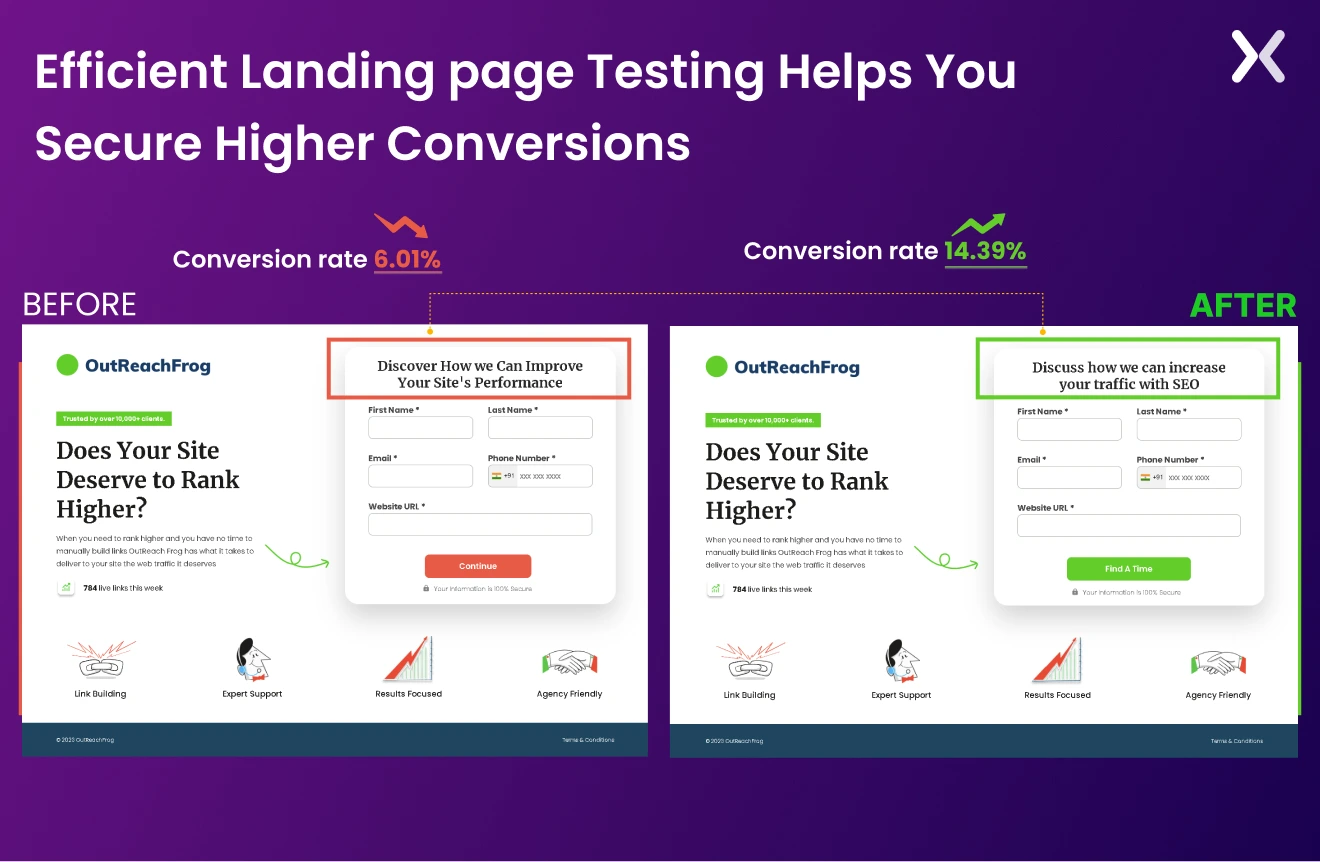
Naturally, you may wonder, “How will landing page testing benefit conversions? Will it enhance user experiences? Where do I begin? Understanding their significance is crucial.
Fret not; this article is tailor-made to address all your concerns and provide a comprehensive understanding of landing page testing. By the end, you’ll be equipped with the knowledge needed to optimize your landing pages effectively, driving them toward their primary purpose: achieving the conversions you desire.
Landing page testing is like a secret recipe for optimizing your page and maximizing conversions. It’s a systematic approach that involves tweaking small elements rather than redesigning the entire page at once.
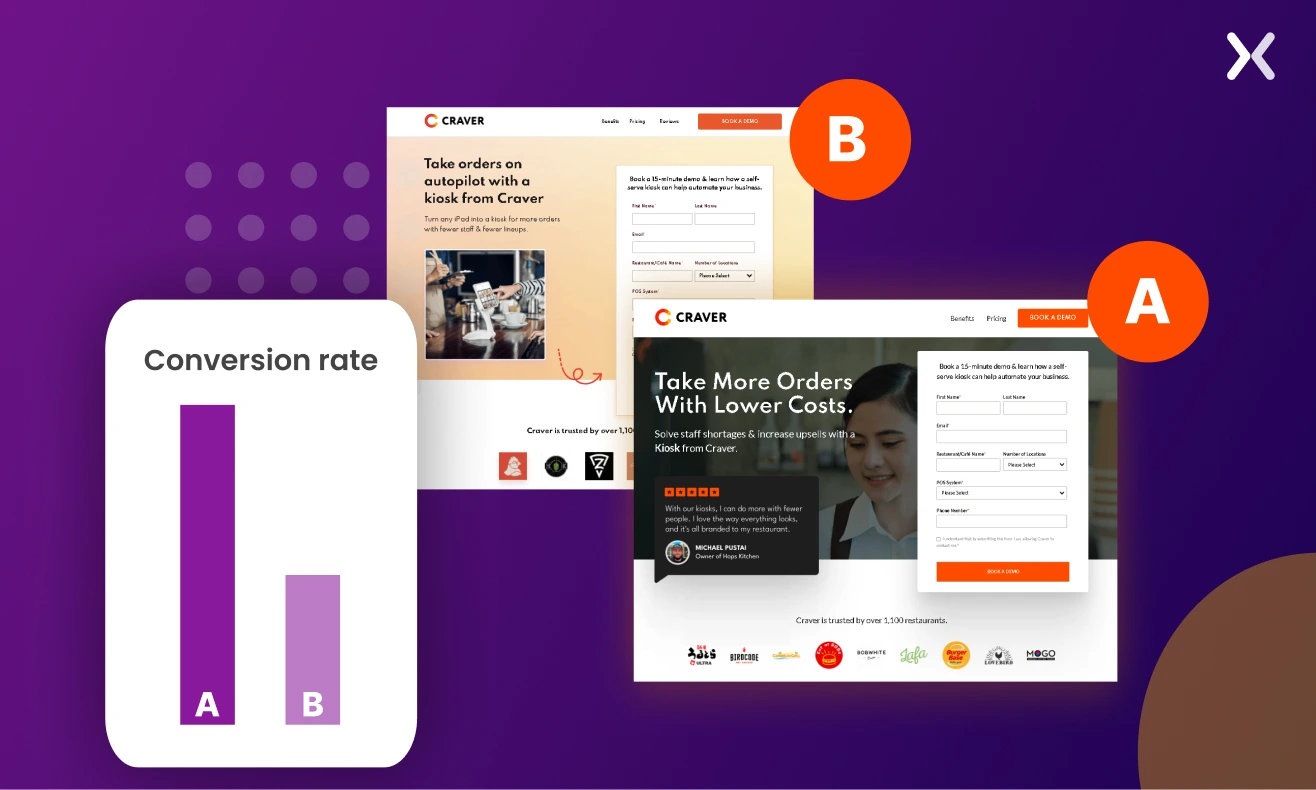
By evaluating user engagement, conversion rates, and other metrics, you can improve the visitor experience and achieve higher conversion rates. It’s a crucial step, especially before launching bigger PPC campaigns, ensuring your messaging resonates with your target audience and boosts your return on investment.
You might have tried landing page testing before and because it didn’t work, you are still skeptical. Many landing page tests fail because of no or bad monitoring strategies and because of the below reasons.
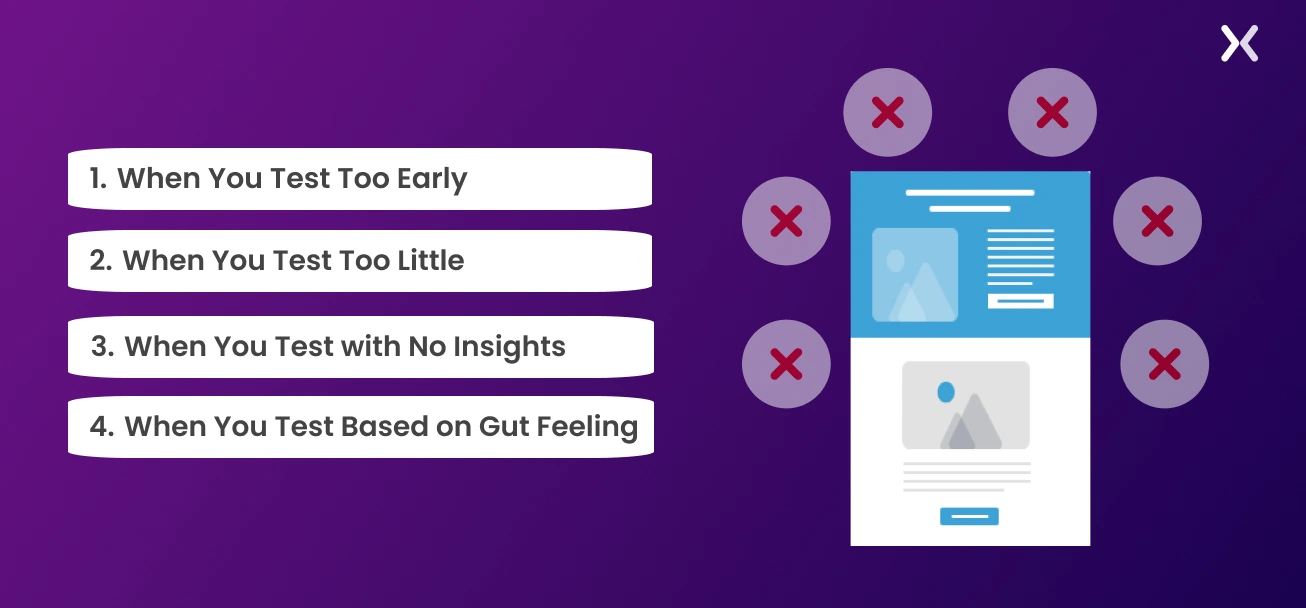
Reliability can go out the window with a mere 200 visitors. Statistical significance demands a more substantial traffic volume for multivariate tests. Many landing pages grapple with insufficient traffic early on. The key is to utilize this start period for collecting valuable user data.
Expecting reliable results after only a week is like trying to grow a tree overnight. Building up volume takes time, patience, and money – resources that aren’t much of a luxury for some.
Testing without essential data collection tools like heatmaps, session recordings, or conversion tracking is a common mistake. Without such information, testing becomes guesswork for what elements to test rather than informed decision-making.
Marketers often diagnose landing page problems without the full picture, leading to failed solutions. In their rush to test, they may try arbitrary variables like button colors, lacking a solid hypothesis to guide their experimentation.
These mistakes often occur when readers don’t seek the guidance of a CRO consultant or agency. By not enlisting these experts, the intricacies of landing page testing can be overwhelming, and the setup of tools for optimal testing may be overlooked.
When it comes to landing page testing, there’s more to explore beyond the familiar A/B testing. Let’s delve into the various testing methods – including their disadvantages and some examples of how they’re done – that can take your optimization efforts to the next level.
Probably the most common and widely used method, A/B landing page testing, works by randomly splitting visitors into two groups. Each group is then exposed to a different version of the landing page. The performance of both versions is measured, and the one that generates the most favorable outcome is declared the winner.
Its simplicity and ease of execution have made A/B landing page testing a favorite among marketers.
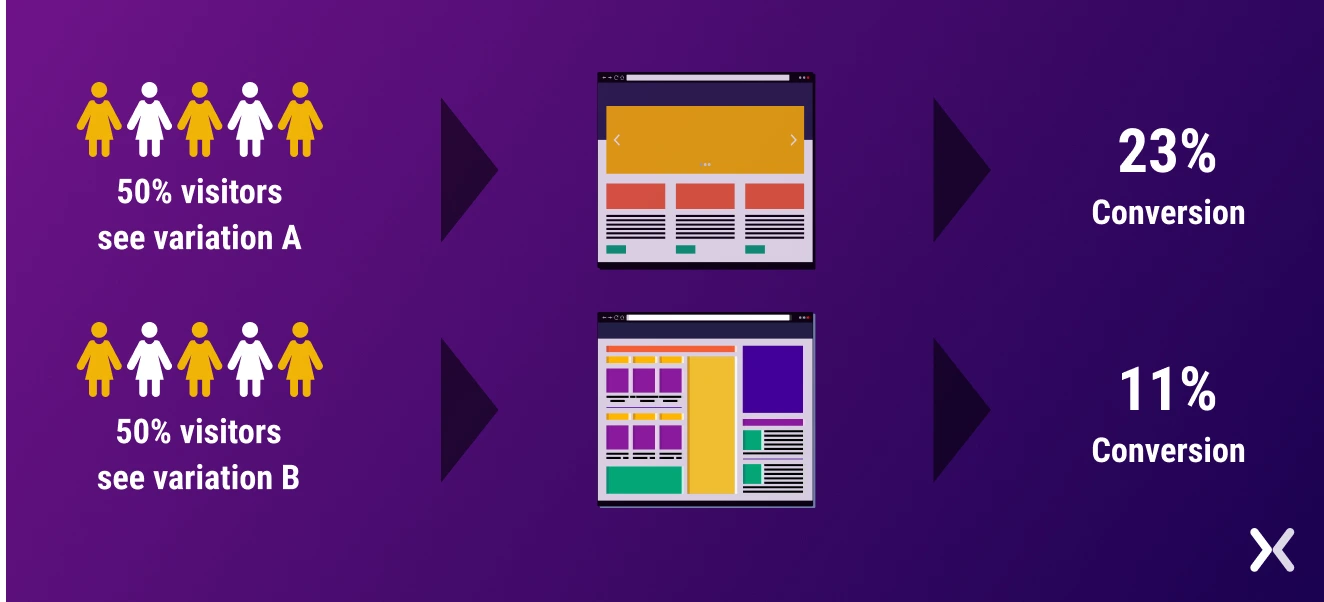
For example: Objective: To determine whether changing the headline on the landing page will lead to higher sign-ups for a free trial of the software.
Version A (Control): “Boost Your Business Productivity with Our Software Suite” Version B (Variant): “Streamline Workflows and Boost Productivity with Our Software Suite”
In this A/B test, half of the incoming traffic to the landing page is shown Version A, while the other half is shown Version B. After a set period, the number of sign-ups for the free trial is compared between the two versions. If Version B generates more sign-ups, it would indicate that the revised headline is more effective at capturing the audience’s attention and encouraging conversions.
While A/B testing is widespread, its limitation lies in its ability to test only one element at a time. To overcome this drawback, we can explore the second type of testing, which allows for more comprehensive experimentation.
Recommended Read: Landing Page A/B Testing Framework to Maximize Conversions
What makes multivariate testing superior to A/B testing is its ability to compare multiple variations of different elements simultaneously. Instead of testing only two complete page versions, multivariate testing allows marketers to experiment with combinations of individual components such as headlines, images, and call-to-action buttons.
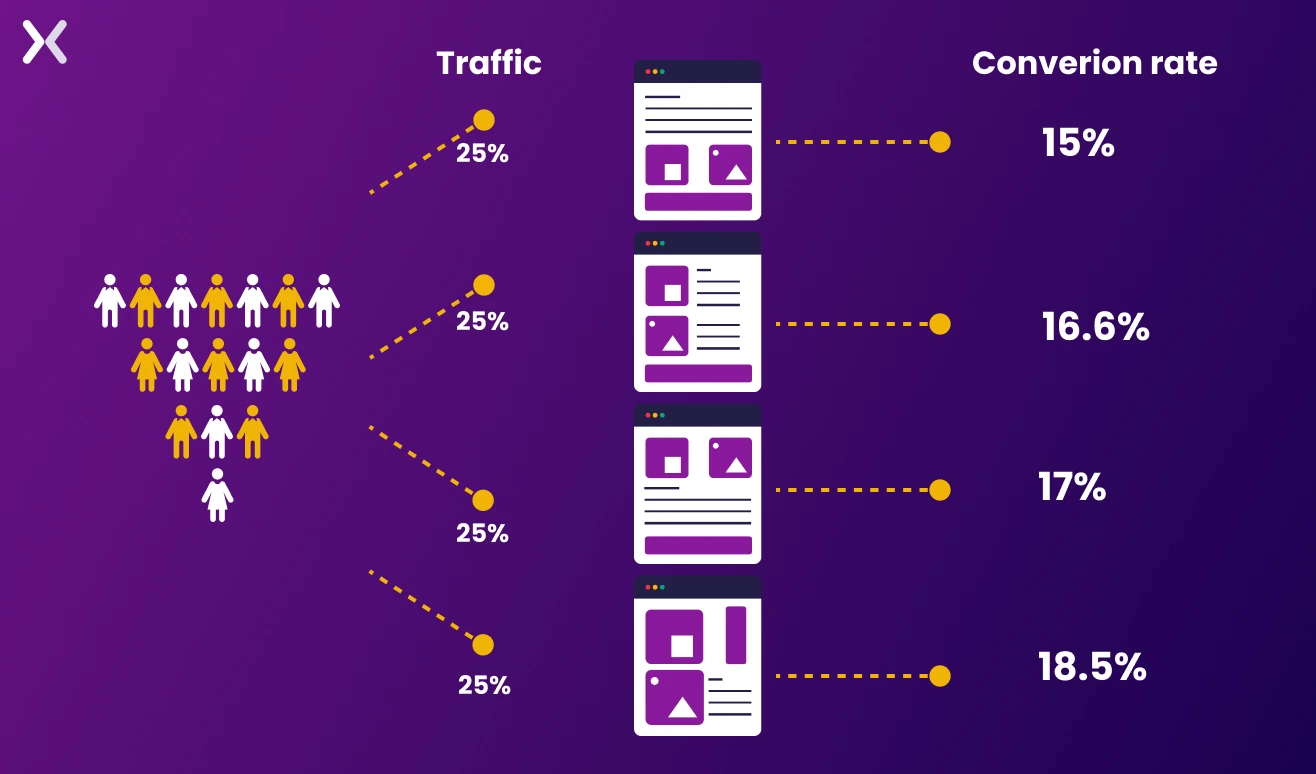
This method enables the identification of the most effective combination of landing page elements to optimize the overall performance of the landing page.
For example: Objective: To find the optimal combination of headline, call-to-action (CTA) button color, and form length for maximum lead generation on the landing page.
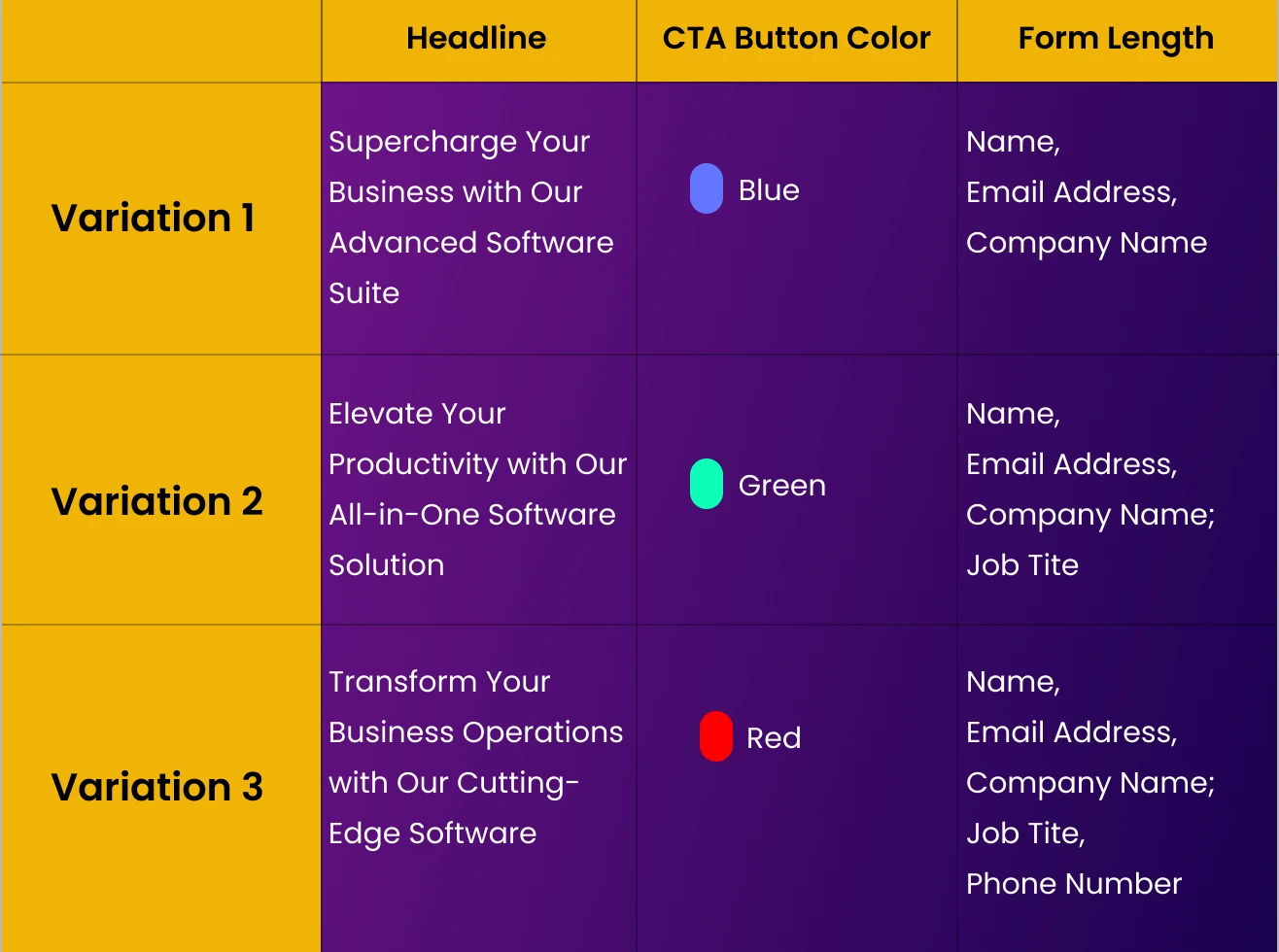
In this multivariate test, three different variations are created, each with a different headline, CTA button color, and form length. The traffic to the landing page is divided equally among these variations.
After gathering sufficient data, the performance of each variation is analyzed to identify the combination that yields the highest number of lead conversions.
The only downside of multivariate tests is that they require many visitors, making statistical significance harder to achieve. Additionally, complex data analysis may make it challenging to pinpoint the specific variable impacting landing page conversion rates.
This type of testing is quite similar to A/B testing but has an extra twist. Unlike traditional A/B testing, where variations are tested on the same URL, split testing involves creating distinct web pages with different URLs.
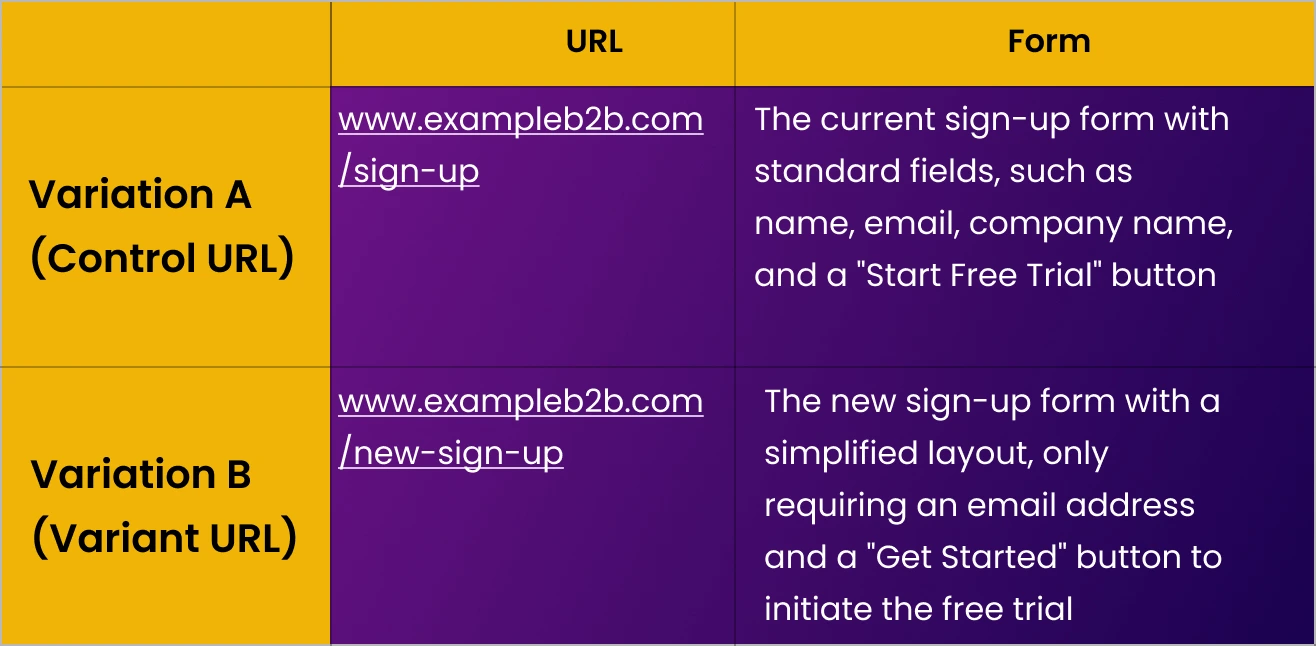
Each variation is then presented to a specific segment of the website’s traffic, and the results are measured based on predefined conversion goals.
Note that split URL testing is best for major redesigns or when significant differences exist in the variations’ content or user flow.
For example: Scenario: A B2B SaaS company wants to optimize its sign-up process and test two different sign-up forms to determine which encourages more conversions (free trial sign-ups).
Test Process:
The B2B website sets up the split testing process for URLs using a testing tool.
The traffic to the original URL (Variation A) is randomly split, with half of the visitors seeing Variation A’s sign-up form field and the other half directed to Variation B’s sign-up form.
The website tracks the number of free trial sign-ups for each variation over a predefined testing period (e.g., two weeks).
After collecting sufficient data, the B2B website analyzes the results to determine which sign-up form performed better in conversions.
Based on the test findings, the SaaS company implements the winning variation on the main website and other your SaaS landing pages to improve its sign-up process and encourage more users to book a demo of their product.
Caution is advised when determining the duration of a test, as prolonged testing may trigger Google Analytics to flag lookalike landing pages for rank manipulation, potentially causing a drop in search engine result ranking.
Now that we have explored the different types of landing page testing methods let’s compare them in a simplified table for a clearer understanding:
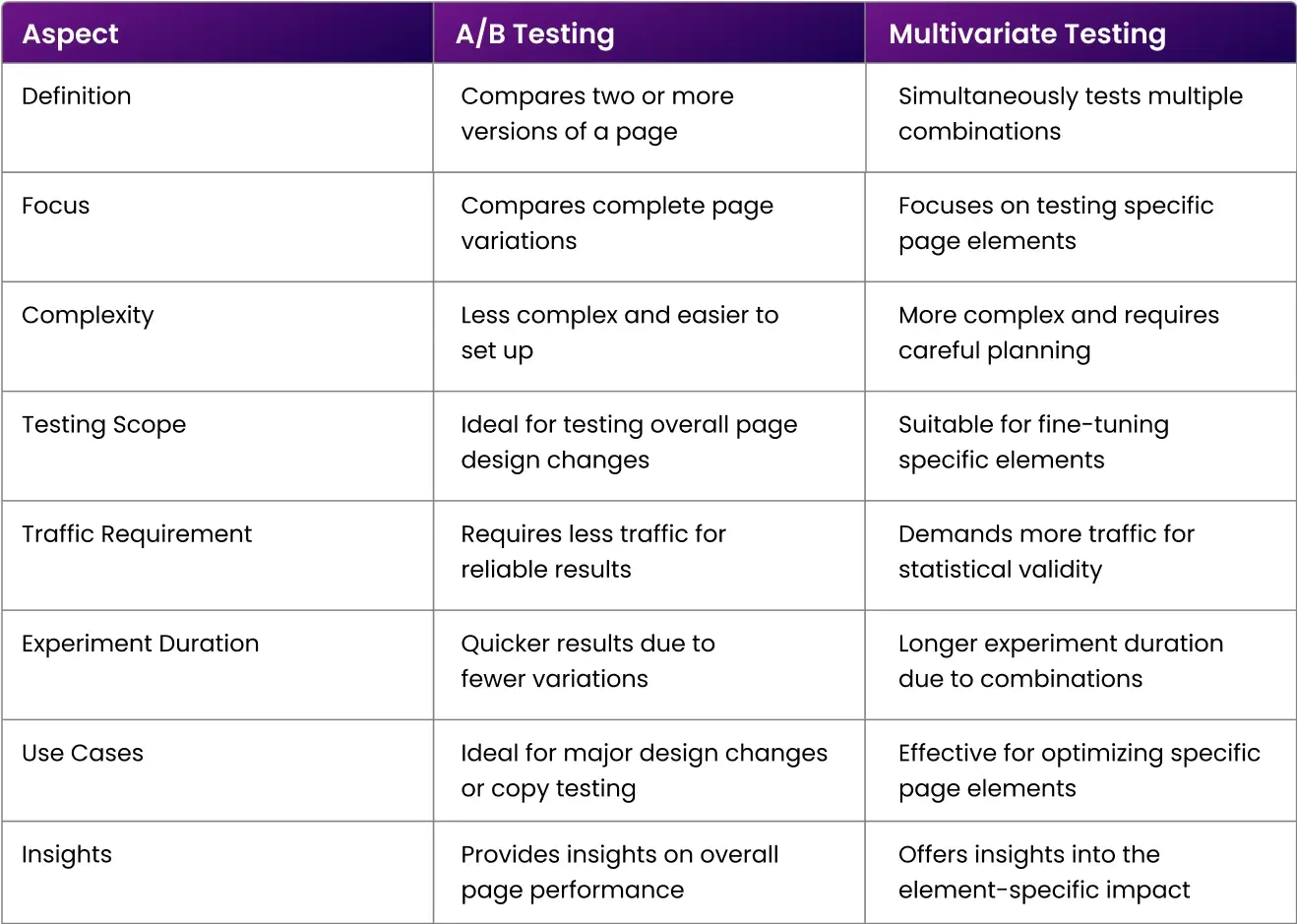
When it comes to landing page testing, there are various tools available to enhance your optimization efforts. These tools typically empower you to customize landing pages, test different variations, gather valuable data, and analyze the performance of each element.
Say hello to Unbounce, the go-to landing page builder for non-coders. With its user-friendly drag-and-drop interface, customizable templates, and the freedom to add your own elements, Unbounce makes landing page creation a breeze.
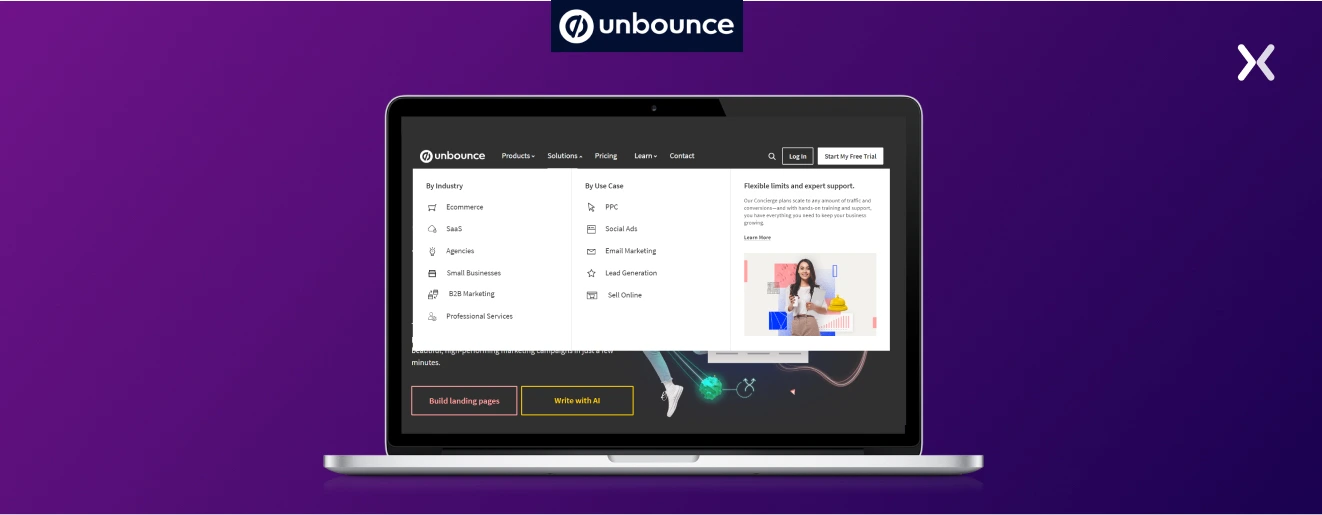
But that’s not all! Unbounce also offers A/B testing capabilities, allowing you to create multiple landing page variants and test them to uncover the high-converting winner. You can easily gain valuable insights and analytics to optimize performance and boost conversion rates. However, please note that Unbounce does not currently support multivariate testing.

Known for its powerful heatmap and user behavior tracking capabilities, Crazy Egg offers visual representations of visitor interactions with landing pages. This tool highlights where users click and how far they scroll and provides invaluable insights into areas of interest and potential friction points.
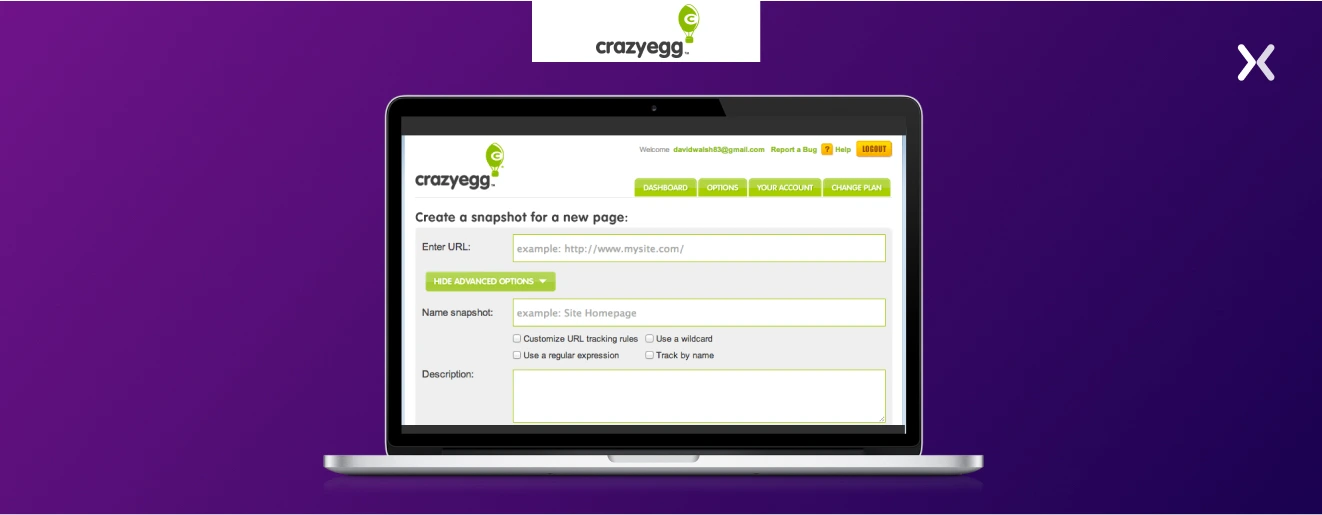
In addition, Crazy Egg empowers users with A/B testing, allowing them to experiment with different page variations and analyze their impact on user behavior and conversions.
While lacking multivariate testing, Crazy Egg compensates with its expansive heat mapping feature that provides access to vast user data, enhancing the accuracy of A/B testing.
This tool equips businesses with an array of robust testing and personalization campaigns. Its intuitive visual editor simplifies test setup, while advanced targeting and segmentation options foster precision.
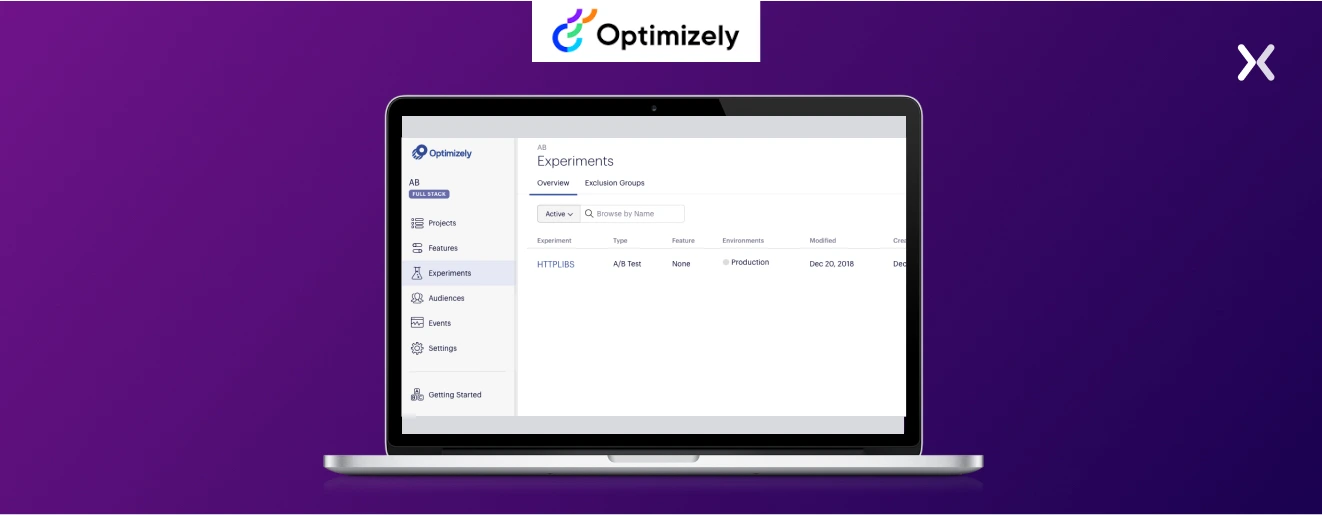
With seamless integration into various marketing and analytics tools, Optimizely proves a go-to choice for businesses of all sizes, from small enterprises to large-scale organizations.
VWO offers a comprehensive conversion optimization platform enabling businesses to conduct A/B and multivariate testing. With the ability to create and test different variations of landing pages, users can optimize performance based on insightful data from this tool.
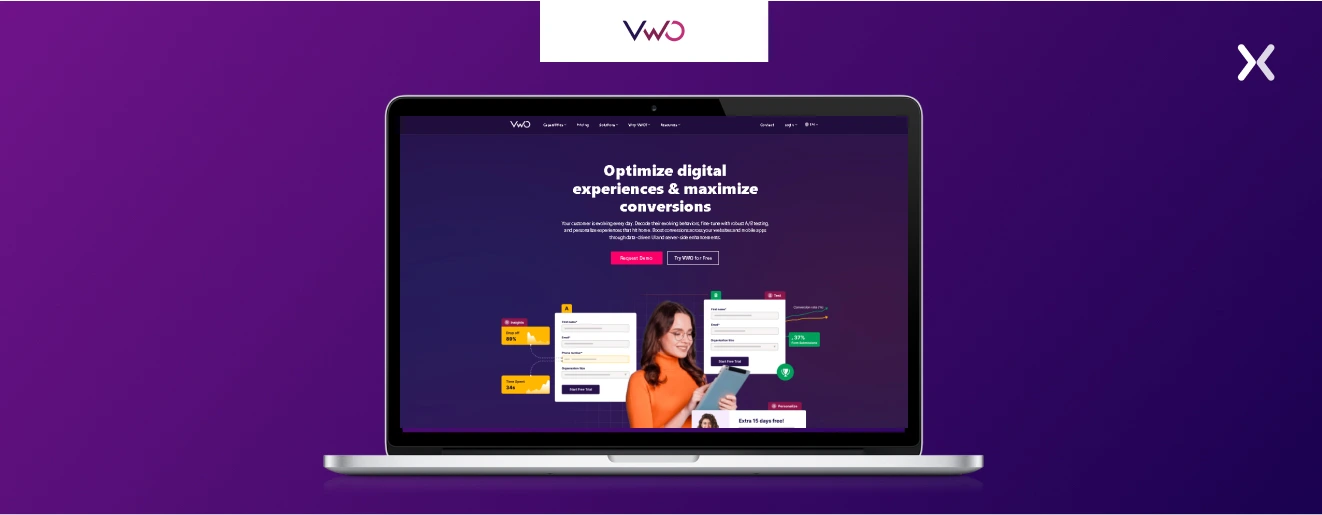
The platform’s intuitive visual editor allows for easy adjustments to landing pages, eliminating the need for technical expertise.
Bringing optimization to the forefront, this robust platform unleashes the potential for businesses to enhance conversions on websites and landing pages. With a user-friendly interface and intuitive visual editor, businesses can effortlessly create A/B tests to compare page variations.
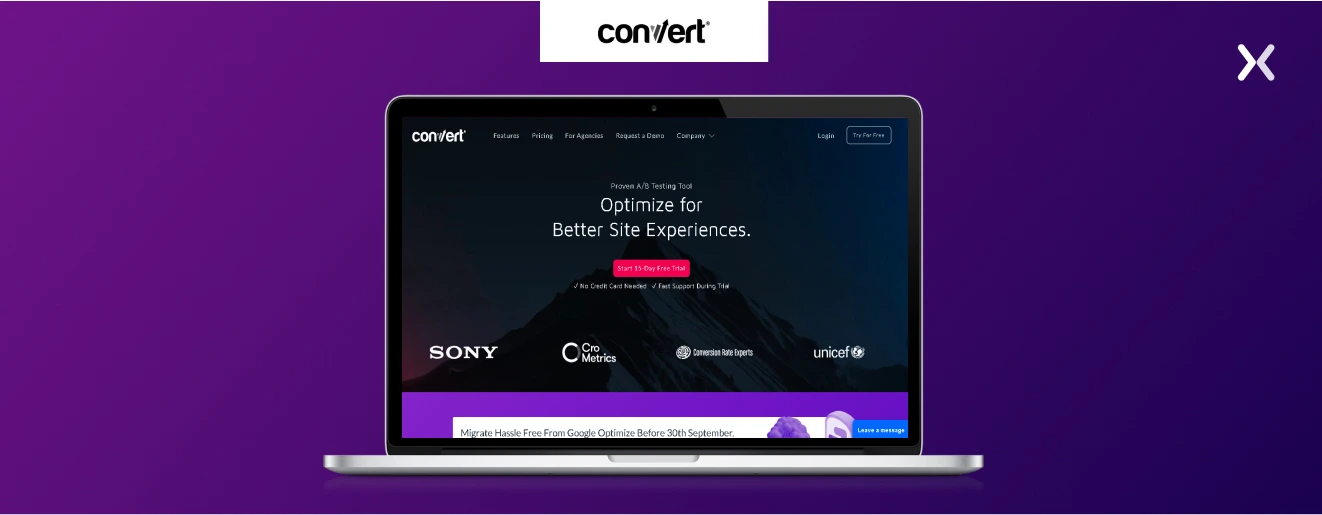
Convert Experiences also offers multivariate testing, allowing simultaneous testing of myriad element combinations.
Building an effective landing page testing strategy requires a structured approach for sustainable, long-term conversion rate gains. Consider the following steps:
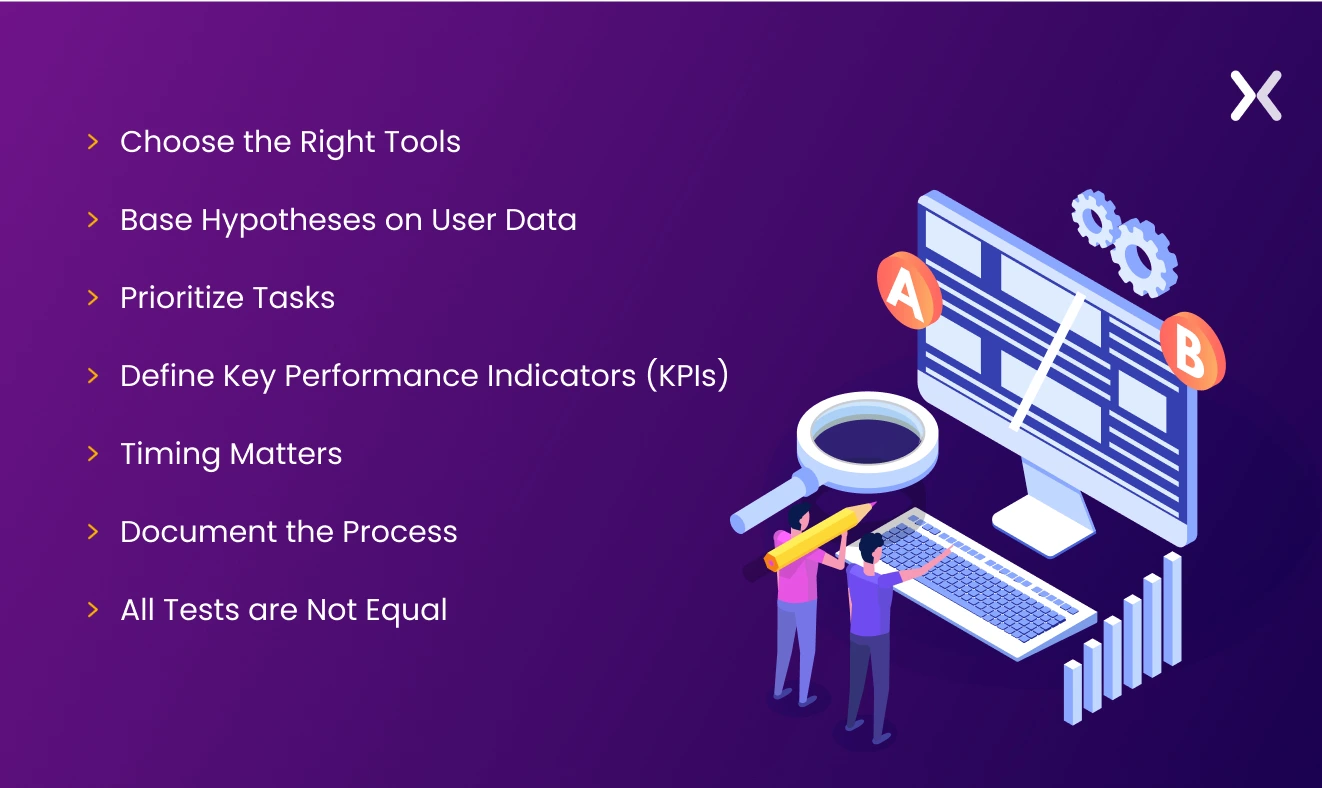
Select a landing page testing tool that aligns with your needs and budget. Consider features like heatmaps and user session recordings for quick insights. Ensure compatibility with your landing page platform and responsive customer support.
Identify areas for improvement by analyzing user behavior data, conducting usability tests, and reviewing heatmaps. Formulate clear hypotheses about changes that will lead to better conversions.
Focus on high-priority tests that require less time and effort. By optimizing resources effectively, you can gain valuable insights for significant improvements.
Set clear metrics, such as conversion and click-through rates, to measure the success of tests accurately.
Choose the right time to run tests, avoiding high traffic fluctuations or significant marketing campaigns. Collect sufficient data during an appropriate test duration, considering seasonal impacts.
Thoroughly document changes, hypotheses, test duration, and results obtained. Learn from past experiments, share insights with team members, and create a knowledge base for future optimizations.
So, by now, you’re probably planning to run some tests of your own. But hold your horses! All tests are not created equal, and some definitely pack more punch than others.
For instance, while it may be tempting to test color variations for your call-to-action (CTA) button, the impact on conversion rates is often minimal. But if you focus on testing more significant elements, like the headline or value proposition, you will likely see a much greater impact.
Remember, every audience segment is different, and what might work for one might not work for another. It is all about using your data wisely to create better hypotheses.
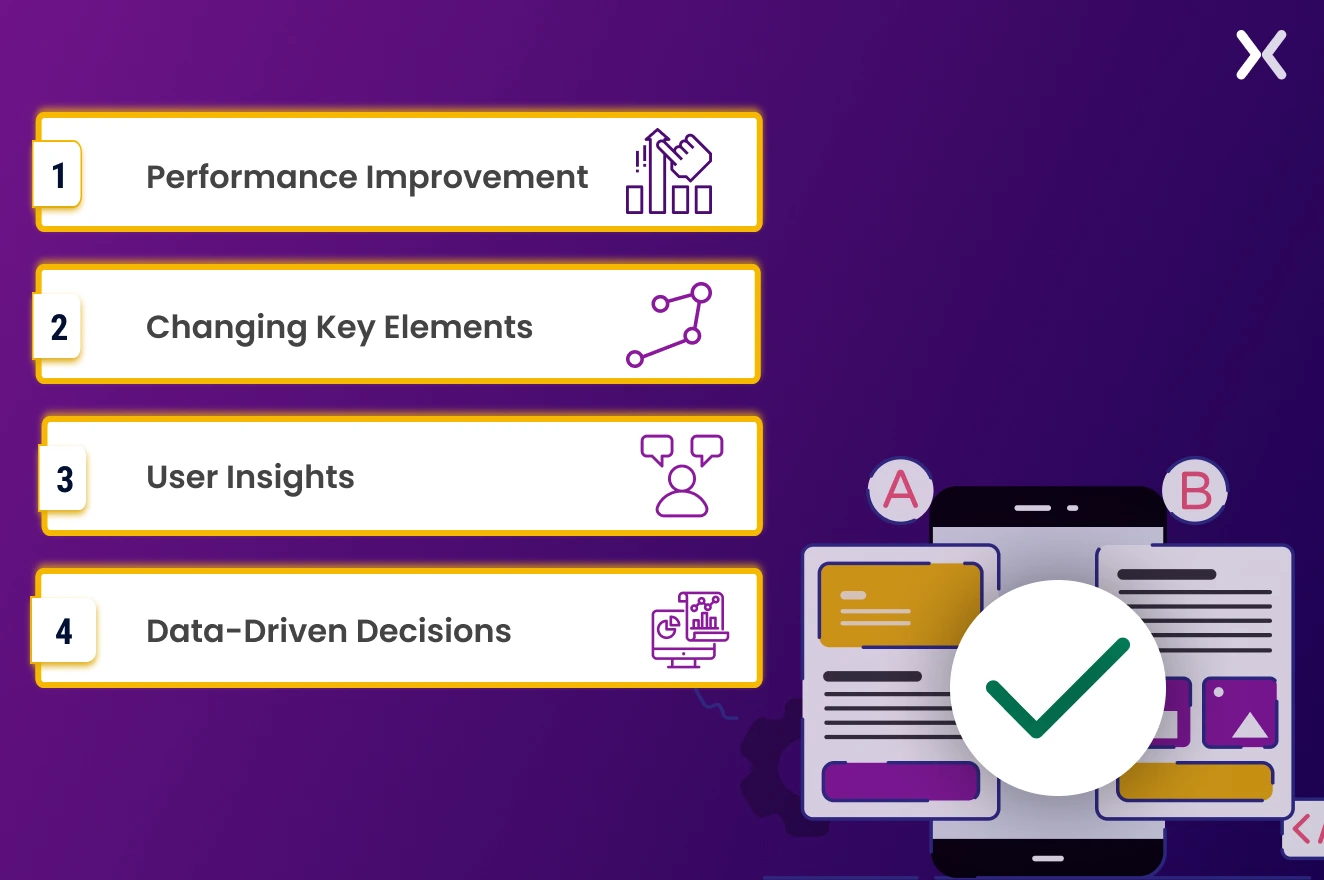
If you’re looking to optimize your landing page’s performance and achieve better results, testing is an effective strategy to increase conversions.
When making significant changes to your landing page, such as design, layout, CTA, or copy, testing different variations can validate which changes resonate best with your audience.
Testing provides valuable insights into user behavior, preferences, and pain points. By understanding your audience better, you can effectively tailor your landing page to meet their needs.
Embracing landing page testing allows you to make decisions based on concrete evidence rather than assumptions or guesswork. By leveraging user data, you can make informed choices and optimize your landing page for maximum impact.
There are specific scenarios where it’s not advisable to perform landing page testing due to potential inaccuracies.
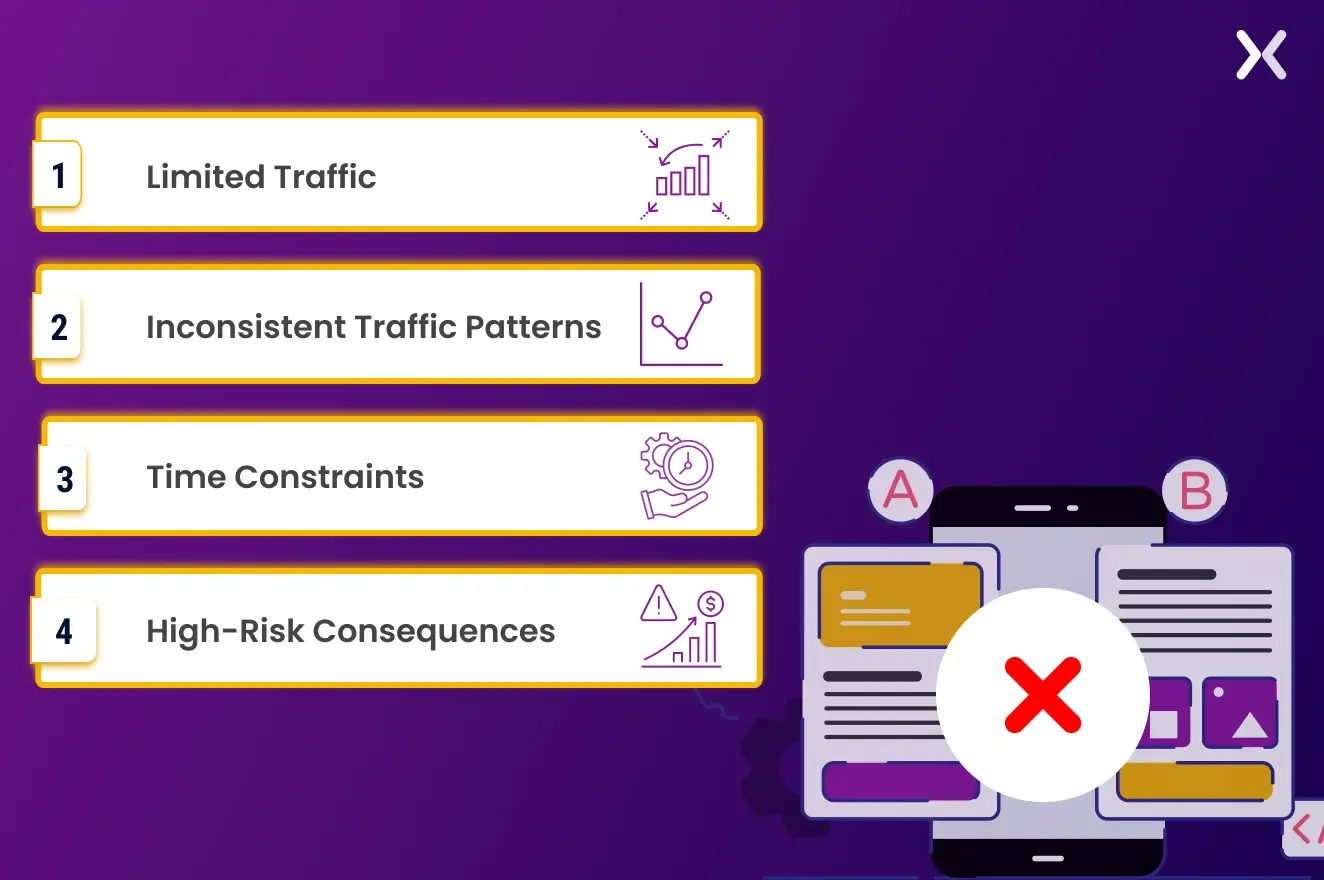
If your website receives low traffic, running landing page tests may not produce statistically significant results. It’s more practical to focus on other optimization efforts to increase traffic before engaging in testing.
Erratic traffic patterns or seasonal fluctuations can hinder the accuracy and reliability of landing page tests. It’s essential to have consistent traffic patterns to obtain meaningful data.
Landing page testing requires sufficient duration to gather meaningful data and draw reliable conclusions. If you have time-sensitive campaigns or limited resources, postpone testing until you can dedicate adequate time and attention.
If a test has the potential to impact your business significantly, it’s essential to proceed with caution or explore alternative testing strategies to mitigate the risk.
The duration of a landing page test varies based on factors like sample size, number of variants, time of year, and test objective. Larger sample sizes expedite the reaching of statistical significance.
Testing multiple variants simultaneously may lengthen the test duration. Consider seasonal fluctuations and user behavior. Certain metrics require longer durations for observing significant changes.
Just when you thought it was time to sit back and enjoy the fruits of your testing, here’s a reality check. When it comes to landing pages, testing is a never-ending journey. Why, you ask? Well, because buyer personas evolve, market trends shift, and your competitor probably just revamped their landing page.
The day you stop testing is when you’ve decided to quit improving. So, keep those tests coming, keep analyzing those results, and never stop optimizing.
In achieving B2B conversions and overall marketing success, landing page testing holds immense significance. As your trusted CRO partner, Apexure brings invaluable expertise.
With 8+ years of experience in landing page optimization, we at Apexure offer tailored strategies to unlock growth opportunities and propel your business forward.
Determining landing page testing costs requires a thorough audit. Let Apexure audit your pages, uncover untapped conversion opportunities, and harness the power of user data for effective testing. Contact us today for easier and more efficient landing page optimization with Apexure.
Learn how to test landing pages better with Apexure’s 100+ blog posts on landing pages. From creation to testing, analysis to optimization, we have shared everything.
Testing a landing page for higher conversions and growth, it tough if you’re new. Take help from one of our landing page experts and get the support you need. Book a call today!
Our landing page portfolio can help you discover conversion-friendly landing page elements that might be missing from your campaigns. Know what’s trending and build your landing page for success.
Run a test for at least two weeks or until it reaches statistical significance, typically at 95% confidence.
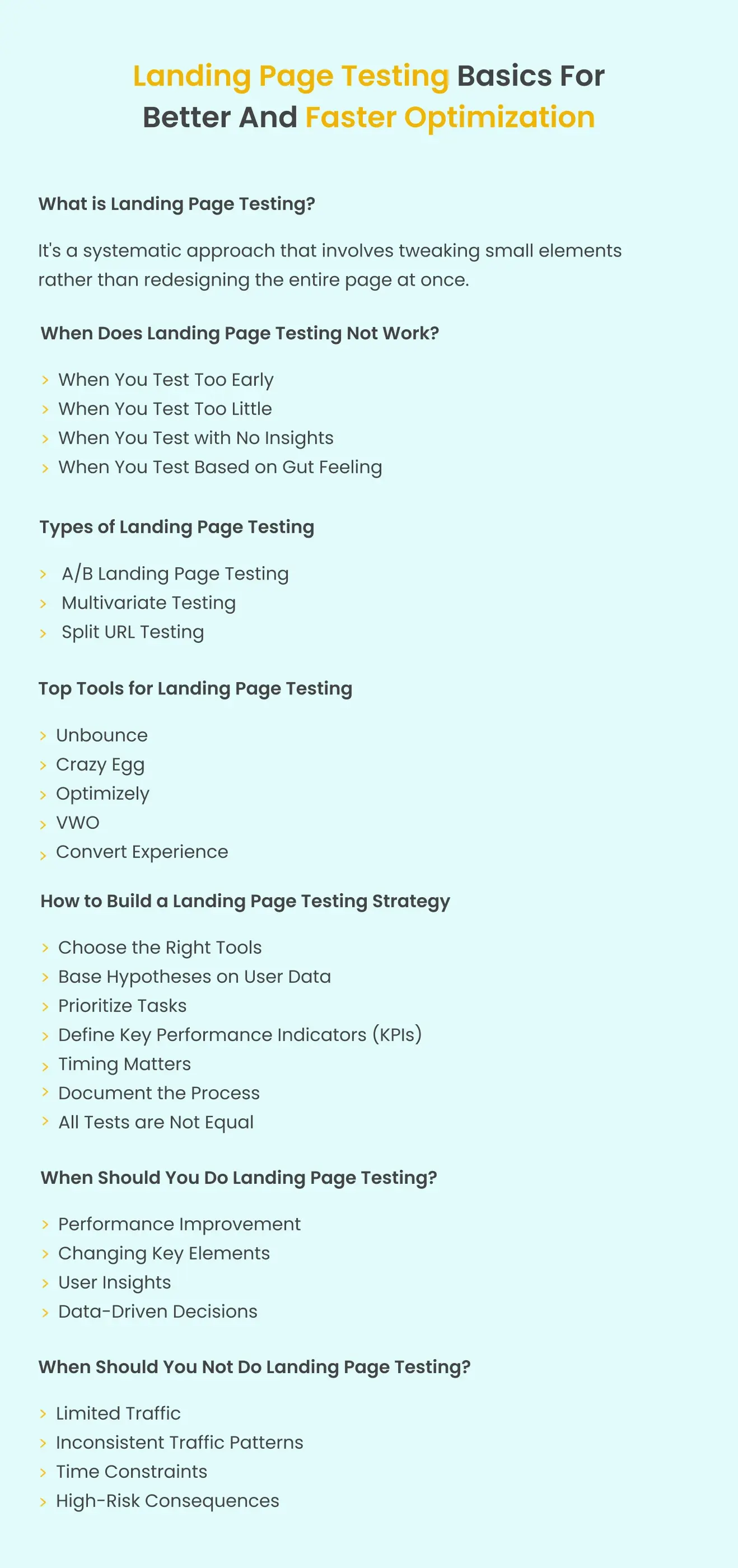
Related Article:
Drive More Sales or Leads With Conversion Focused Websites and Landing Pages
Get Started
In today’s fast-paced digital world, having a responsive website is no longer just a nice-to-have, it’s essential. Whether...
As artificial intelligence continues to evolve, businesses are finding innovative ways to enhance their marketing efforts. One of...
Get quality posts covering insights into Conversion Rate Optimisation, Landing Pages and great design